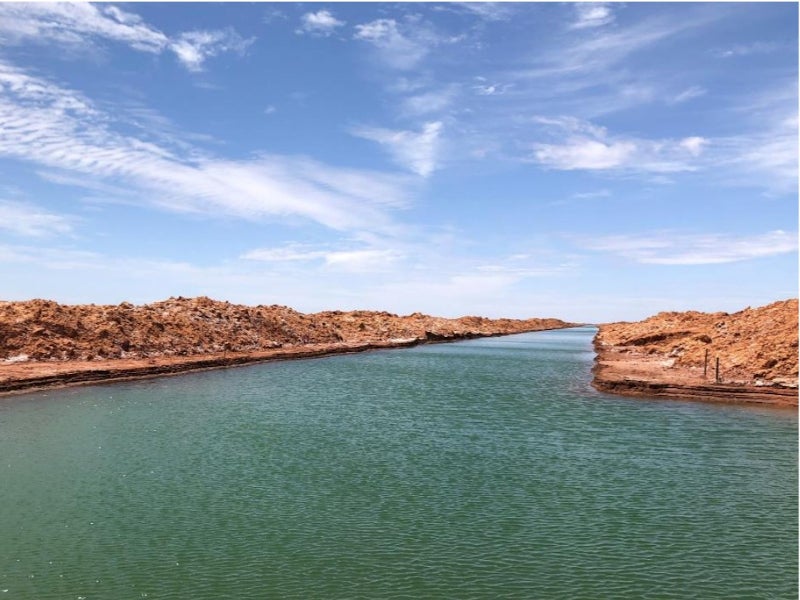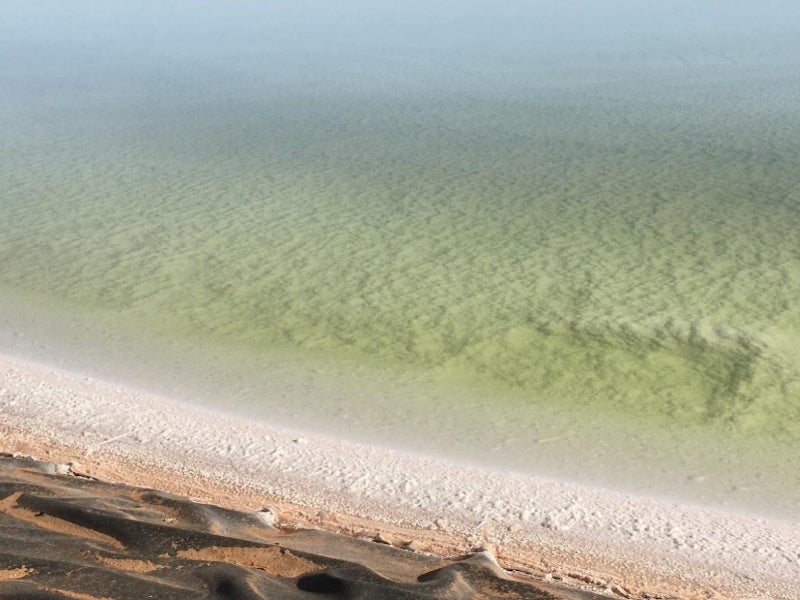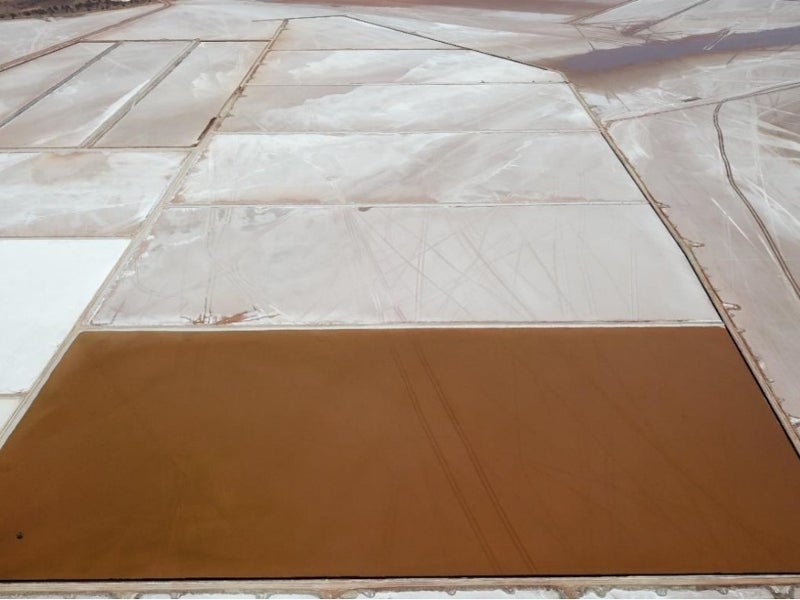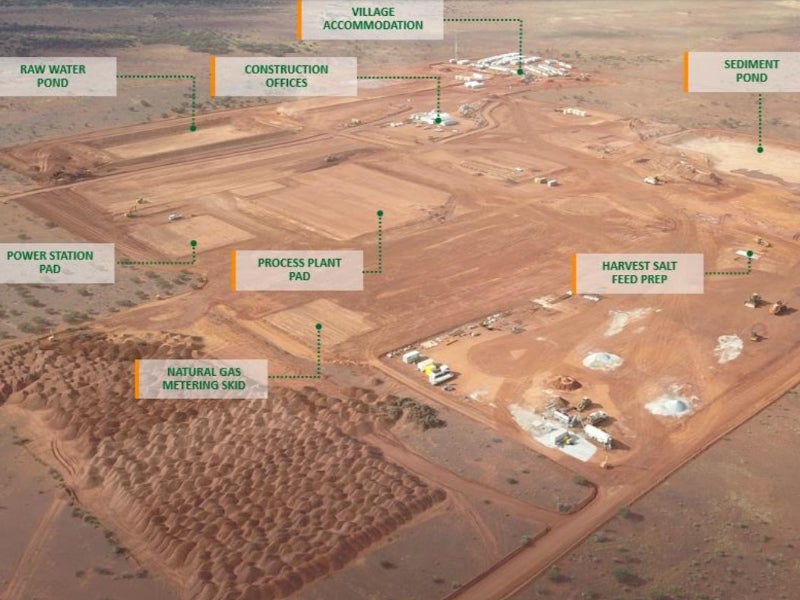The Lake Way project is a sulphate of potash (SOP) operation being developed by Salt Lake Potash (SO4) in the Goldfields region of Western Australia (WA).
It is expected to produce 245,000tpa of SOP with an expected mine life of more than 20 years.
Construction of the evaporation pond network and brine abstraction trenches of the project began in the first quarter of 2019 while the bankable feasibility study (BFS) was completed in October 2019.
The civil earthworks for the processing facility and non-process infrastructure were completed in the second quarter of 2020.
The project achieved the fully funded status in August 2020 after SO4 executed a A$203m ($138m) debt financing package and a A$98.5m ($66.98m) capital raising programme to fund its development. It is expected to be commissioned in December 2020 and achieve first sales in the first quarter of 2021.
Lake Way project location
The Lake Way potash project is located approximately 15km from Wiluna, a town in the Mid West region of WA. It is being constructed on the existing Matilda mining tenure held by a subsidiary of Blackham Resources.
Lake Way project reserves
The Lake Way project is estimated to contain probable ore reserves of 5.4 million tonnes (Mt) of SOP, grading 6.8kg/m³ and containing 2.4Mt of potassium. It will produce premium-grade SOP.
Mining at Lake Way project
The project will comprise five types of ponds, namely Halite pond, Carnalite harvest pond, Kainite Carnalite harvest pond, Bitterns pond, and Recovery pond.
The brine extracted from the trenches will be continuously pumped to the evaporation ponds for concentration by evaporation to enable the recovery of potassium-bearing minerals for the production of SOP.
The brine is pumped from the trenches into the Halite pond, which is the initial evaporation pond. The brine concentration is checked to ensure the formation of only halite salts in the pond while potassium remains in the brine. The brine solution is then pumped into the Kainite pond where the concentration is monitored to ensure the formation of correct potassium salts.
The majority of the potassium harvest salts are formed in the Kainite pond. The salts are harvested, while the concentrated brine is transported to the Carnalite pond.
Streams of waste brine are produced in the Carnalite plant due to the dissolution of salt in the water added to the process. The resultant brine undergoes saturation in salt, including potassium.
The waste brine is transported to the recovery pond for improvement of the overall plant recovery. The recovery pond evaporates water to form potassium-bearing salts.
The salts are harvested while the concentrated brine is directed to the Carnalite pond. The remaining brine from the Kainite and Recovery ponds is pumped into the Carnalite pond to collect any residual potassium salts from the brine, which are formed as Carnallite salt. These salts will be harvested at regular intervals.
The non-halite residue from the pond system does not contain potassium and is the liquid reject stream. It contains a high concentration of magnesium chloride and devoid of most other ions. The magnesium brine is sent to the terminal Bitterns pond for further evaporation to dryness.
Processing details
The company plans to construct an SOP demonstration processing plant with a capacity of 50,000tpa.
The harvested salts will be transported to the processing plant run-of-mine (ROM) stockpile area via trucks, where it will be crushed in two phases in a roll mill and attrition cells.
The salt slurry will be pumped into the conversion circuit for converting the kainite to schoenite. The converted harvest salt will pass through a reverse flotation circuit to remove waste halite feed salts and produce a solids waste stream of halite salt.
The schoenite salt will be mixed with water and heated to 50°C in the SOP Reactor to convert it into SOP. The step will produce the SOP product along with an SOP mother liquor containing magnesium sulphate and dissolved schoenite.
The SOP mother liquor is then cooled to allow precipitation of secondary schoenite from the liquor, which is then recycled to the SOP crystalliser. The SOP product from the crystalliser is filtered and dried in a rotary drier. It is subsequently sent to the product storage shelter for stacking.
The product will be recovered by a front-end loader and stored in bulk bags for transportation to the markets.
Lake Way project infrastructure
The project site will include an administration and site village, power plant, warehouse, workshop, along with raw water pond, runoff settlement ponds, and site access roads.
Supporting infrastructure will comprise hardstand areas, refuelling facilities, and washdown bays. The company also plans to use the Blackham infrastructure such as roads, pipelines and pits.
The company drilled seven production bores and two monitoring bores for supplying the reverse osmosis plant and water for the processing plant. Process water will be sourced from existing pits in the Matilda South gold mine.
Contractors involved
GR Engineering Services was awarded engineering, procurement and construction (EPC), and engineering, procurement and construction management (EPCM) contracts for the processing facility and non-process infrastructure at the Lake Way potash project.
The company is required to provide plant, materials, labour and construction services under the EPC contract. The scope of the EPCM contract includes the provision of EPC management.







